Moto Z Force Droid vs Samsung Galaxy S7 edge
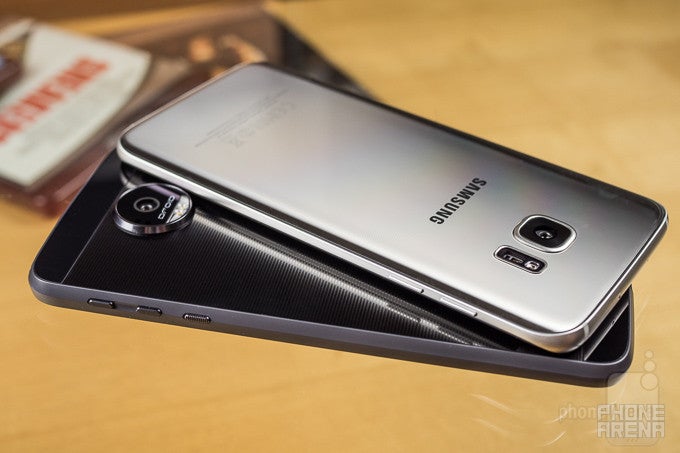
Introduction
The smartphone market gets a lot of criticism for a lack of innovation: this year's hot new phones are all too often a rehash of last year's models. Sure, new hardware delivers better performance, but those gains are usually incremental, and it's rare that we see a new phone that instantly becomes a must-have item. When Samsung releases a new Galaxy S model, it's super-easy to take for granted that the phone will be well-made, powerful, and a market success. But will it also be innovative, and inspire other phone makers with its daring design? That's a much more difficult ask.

We've already taken a look at how the Moto Z Force Droid Edition measures up against Apple's iOS heavyweight, last year's iPhone 6s Plus, and now we're eager to see how the modular smartphone similarly compares to Samsung's early-2016 effort, the Galaxy S7 edge.
Design
Sleek and stlyin' vs. cold and utilitarian
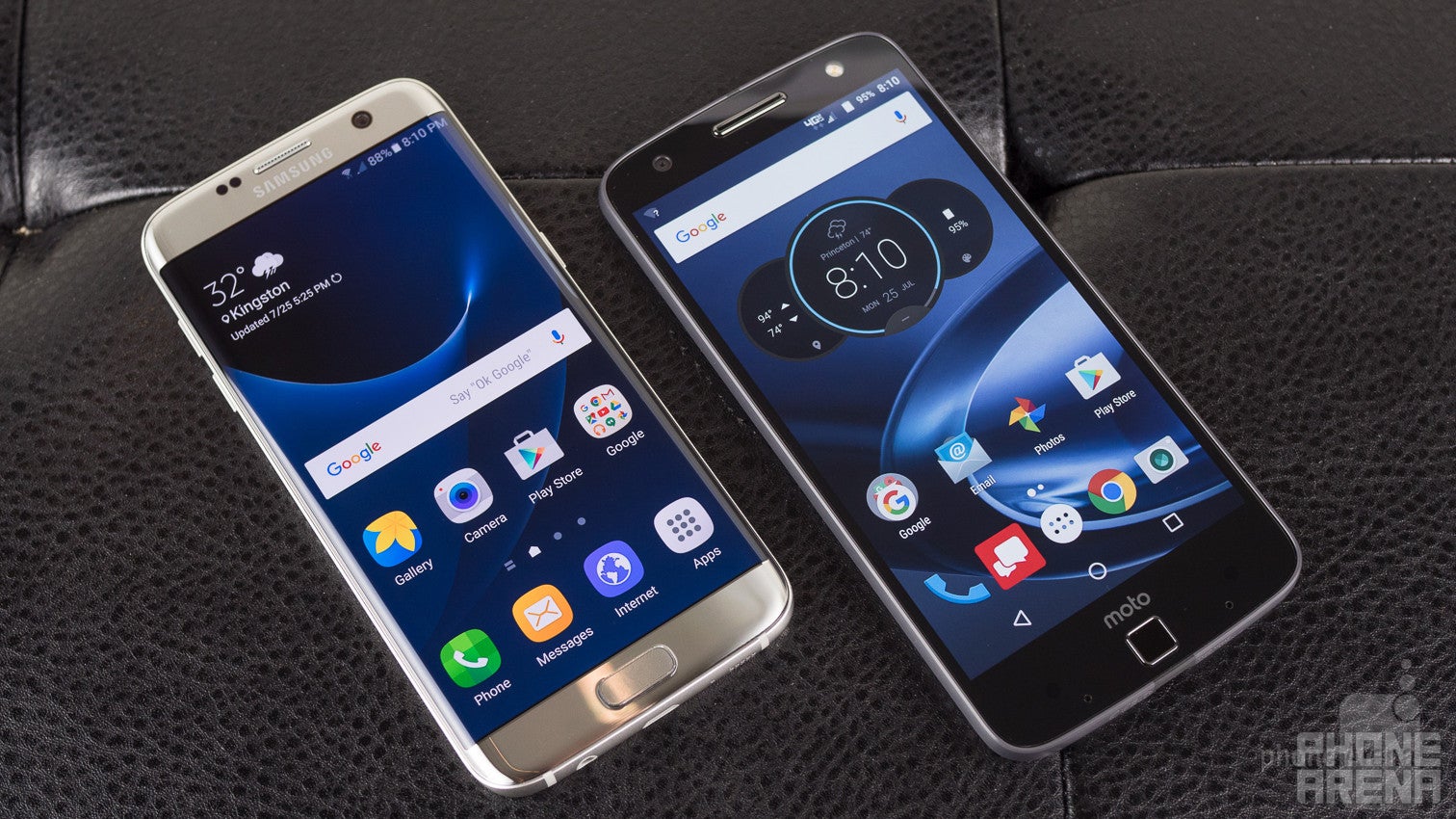
Samsung's phone places a premium on aesthetics, and it shows. The Galaxy S7 edge blends metal and glass in a handset that's both attractive and functional – in this case, enabling the phone to offer its over-the-edge curved display. The whole look is one we've seen before (with varying degrees of screen curvature), and the GS7 edge can be thought of a bit as the offspring of the Galaxy S6 edge and GS6 edge+, splitting the difference in sizes. All told, the handset's remarkably sleek, especially in comparison to the Moto; even the phone's camera bump is barely there, blending with ease into the handset's glass back panel.
The Moto Z Force Droid, meanwhile, is a phone built with a sense of utility. As a consequence of its support for Moto Mods interchangeable backs, the handset itself has a flat rear panel that abruptly transitions at the edge; it's not an unattractive look, but it's one that's far removed from the GS7e's graceful lines.
It's also a handset that's taller and wider than Samsung's, and while the Moto is officially slightly thinner (to the tune of 0.8mm), you wouldn't know it, even holding the handsets at the same time – they really do look and feel just about the same thickness. Honestly, the GS7 edge comes across (perceptively) as the slightly thinner of the two, thanks especially to its lack of a pronounced camera bulge.
Display
A tale of two gimmicks – but is one more valuable than the other?
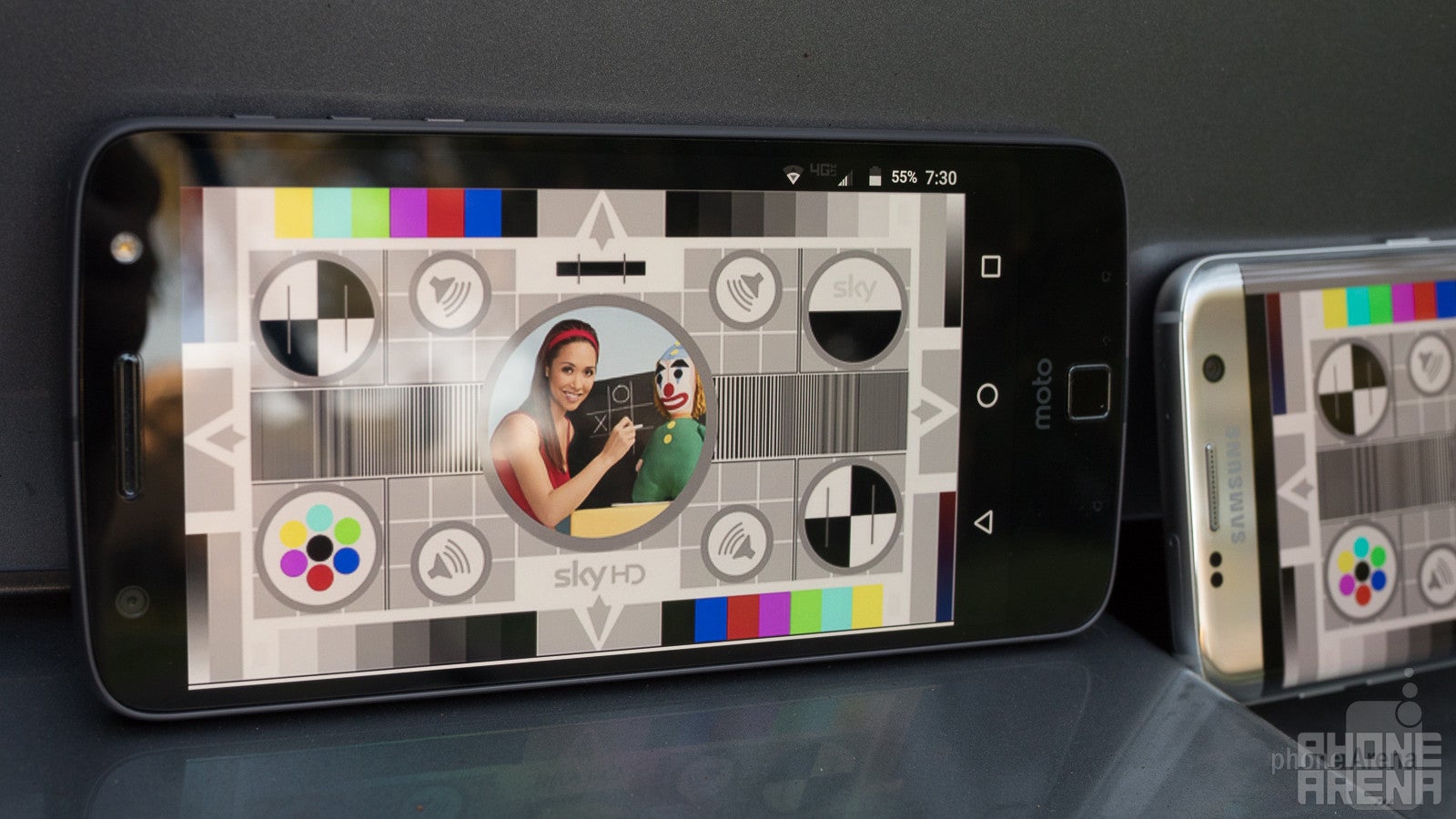
Both these screens start out superficially similar: a pair of 5.5-inch AMOLED display with quad HD (1440 x 2560) resolutions. On smaller panels, a resolution that high might be a questionable decision, but this is just about the right screen size with which to really appreciate it.
But it doesn't take long for these handsets to start diverging, and we need look no further than Samsung's curved screen.
We can't deny that the Galaxy S7 edge's dual-curved screen is eye-catching and a remarkable feat of engineering, but in day-to-day use it's a bit frustrating. Screen-filling videos look distorted as their content spills over onto these edge areas, and when looking head-on at the display, there's a distracting “shadow” effect as brightness drops off around the curve. As for Samsung's own software taking advantage of the tech, maybe special edge-area enhancements made sense for models like the original Note Edge with a much more extreme curve, but here they feel like distracting (and not particularly well-executed) afterthoughts.
The Moto Z Force Droid's screen has its own gimmick, in the form of its shatter-resistant construction; while an unexpected drop may mar the phone's finish or scratch up its display, the panel itself should avoid succumbing to a catastrophic failure, thanks to a combination of protective layers and a flexible AMOLED screen.
Output from the two panels is comparable, with a variety of color-profile modes to accommodate varying viewing situations (and users' preference), and screens bright enough to be viewed comfortable even on sunny days. Unfortunately, both phones exhibit one particularly annoying trait there, where maximum brightness can't be achieved by manually controlling the brightness slider, forcing users to rely on the phones' auto-brightness setting for the purpose.
Interface
Some Android users love nothing more than the look and feel of stock, and for them the Moto Z Force Droid makes a good choice. The phone may be a bit removed from Nexus territory, but its software is seriously lightweight, and customizations like gesture controls largely stay out of your way if you're not interested in taking advantage of them.
Meanwhile, Samsung's TouchWiz may be a lot more straightforward today than it was a few generations prior, but it's still a major re-engineering of Android's UI, and users not familiar with it will need to plan for a period of adjustment. That said, it's also a quite powerful interface, and one worth learning. Features like Multi Window add functionality that the Moto lacks altogether, and while those edge-screen interactions weren't exactly our cup of tea, they do deliver an impressive amount of flexibility.
Both phones invite users to take advantage of biometric fingerprint authentication for everything from unlocking the handsets to authorizing payments, sharing a bottom-bezel scanner – the Moto's is a stand-alone sensor, while Samsung bakes its into the GS7e's home button. While both do what they're supposed to, Moto's scanner works quite a bit faster than Samsung's.
Processor and Memory
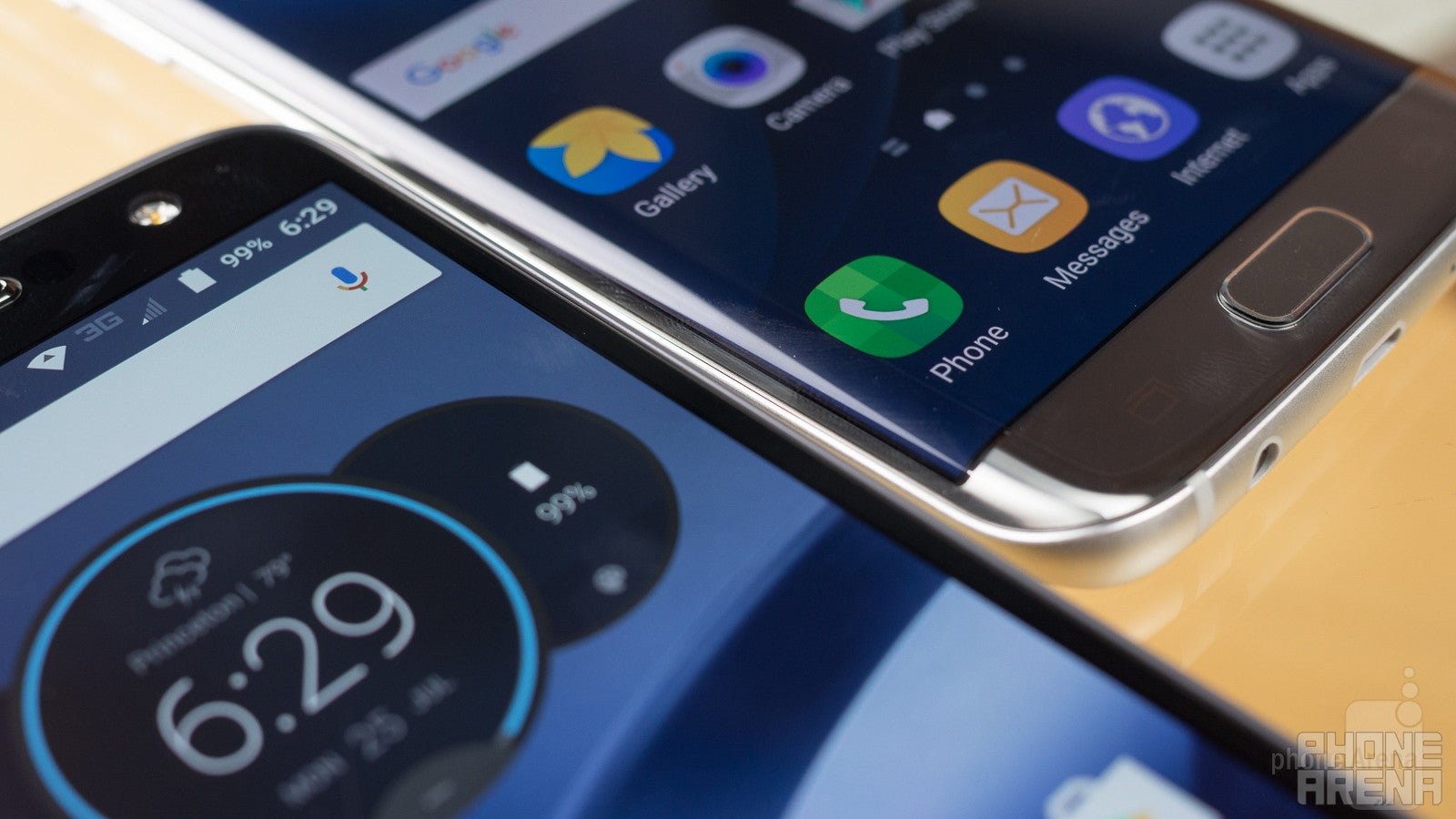
Neither of these handsets are hurting for processing power, and they've got the silicon to handle today's most demanding apps with relative ease. Their respective manufacturers have also equipped each with 4GB of high-speed LPDDR4 RAM, empowering the phones to pull off some smooth multi-tasking – and as two flagship smartphones from big-name phone makers, we'd expect nothing else.
In addition to being relatively evenly matched on the performance front, the Moto Z Force Droid and Galaxy S7 edge also share similar storage options. 32GB is the base level for each, and also the far easier option to come by. 64GB configurations are also available, but limited in terms of the retail channels or international markets through which the phones are sold.
Luckily, there's always the option for microSD expansion, and each of these phones is only too happy to let you pop a spare flash card into its hybrid SIM tray and seriously increase your available space.
Internet and connectivity
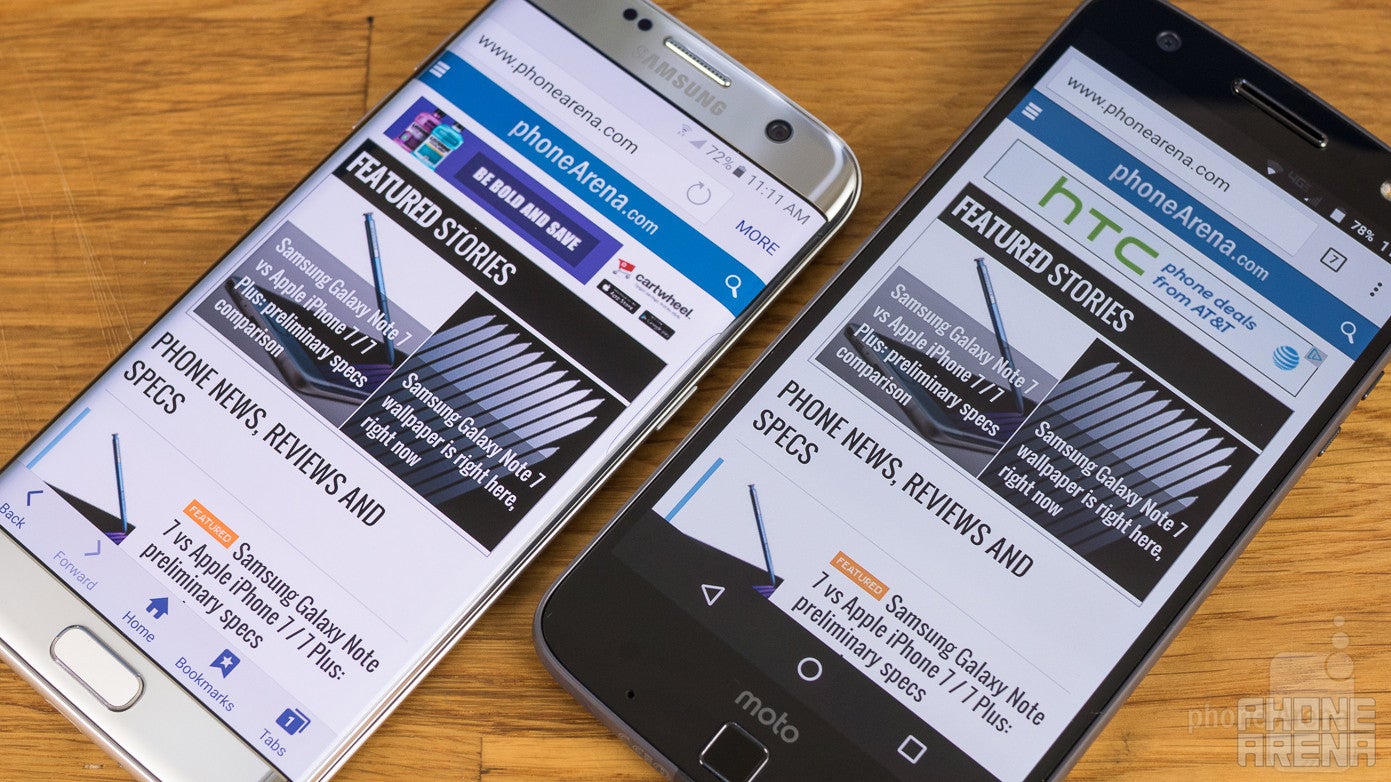
Samsung loves doing things its own way, and that extends to offering its own internet browser. You'll still find Chrome out-of-the-box, so you've got your backup if Samsung's software's not to your liking, but give it a chance and you might just be swayed by interface decisions like the convenient screen-bottom navigation button placement. The stock Chrome on the Moto Z Force Droid isn't doing anything special, but web browsing on either phone is a smooth, largely stutter-free experience thanks to the copious processing power behind this hardware.
Neither handset does anything really surprising in terms of its radios, offering standard cellular, Wi-Fi, and Bluetooth options, but there are a couple noteworthy ways each of these phones can interface with other equipment. For Samsung, that's the Magnetic Secure Transmission tech it uses for Samsung Pay, letting the GS7e interface with credit-card readers that lack NFC systems (which the phone also supports). On the Moto Z Force Droid, we've got that array of pogo pins on the back to support optional Moto Mods accessories.
Samsung stuck with micro USB for the Galaxy S7 edge's wired interface (though this generation could be the manufacturer's last), while the Moto's already made the leap to reversible USB Type-C.
Camera
Samsung's got a reputation to protect, and it doesn't let us down
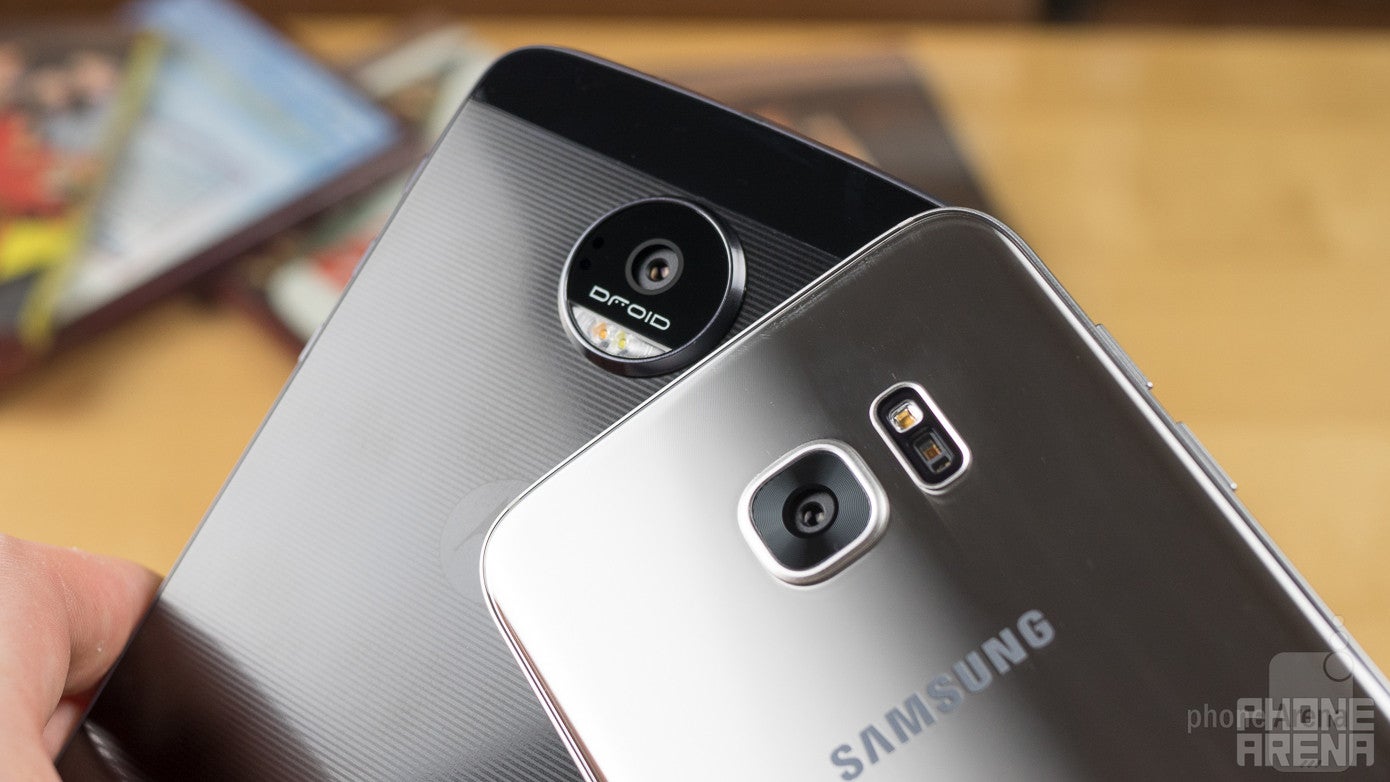
Arguably the big one here: who's got the better camera? The Moto Z Force Droid's high-res 21MP sensor with enhanced focal modes is one of the phone's major selling points over the thinner Moto Z Droid, while Samsung's got its reputation to defend with this year's Galaxy S models offering some of the best-performing cameras we've seen to date.
There's no denying that the Moto's camera has a big advantage over Samsung's when it comes to resolution, Samsung having decided to dial-back resolution for its flagship's camera and giving us a 12MP sensor. But there's a lot more to good-looking photos than just pixels, and Samsung's image quality quickly takes the lead.

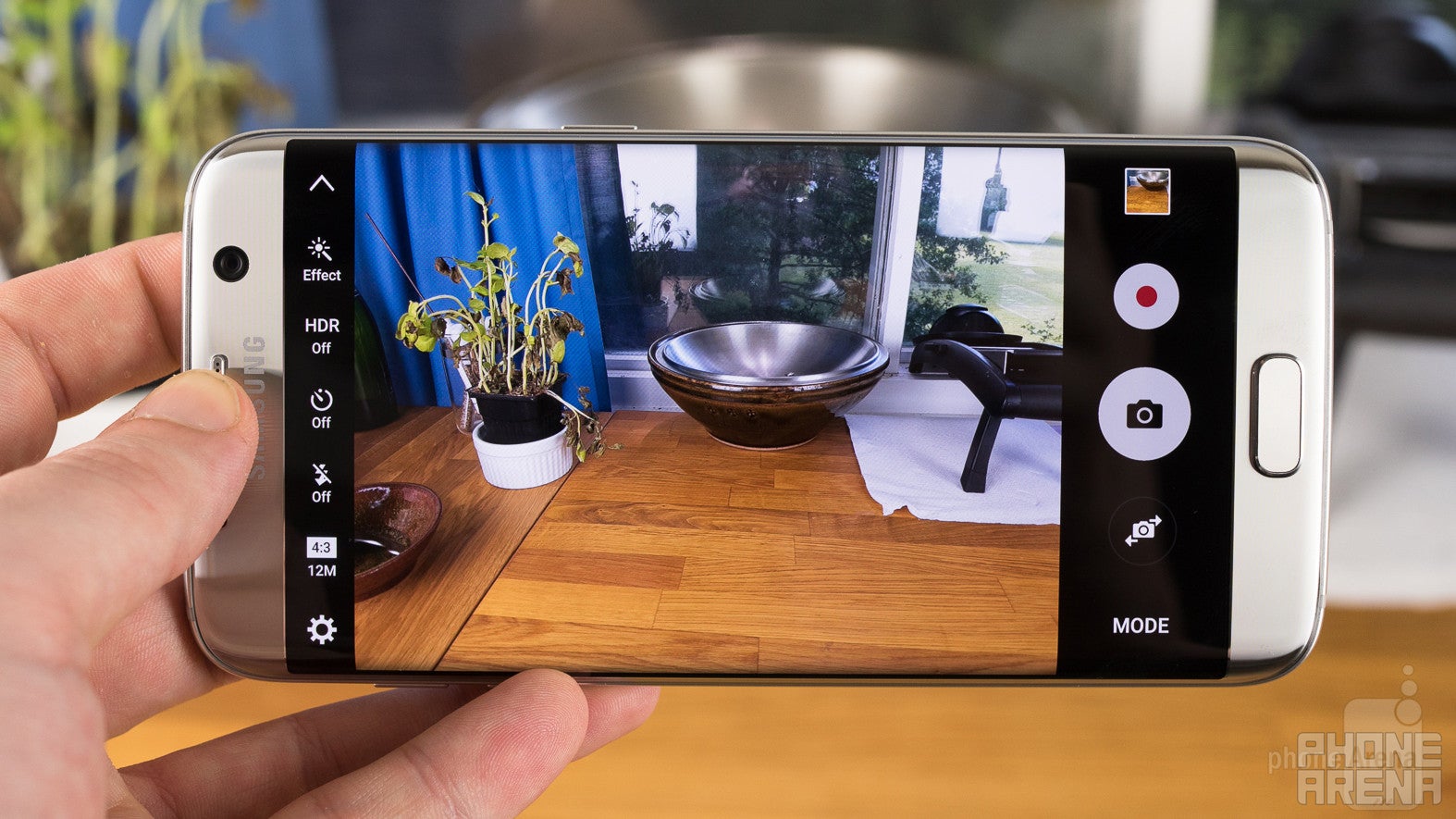
From exposure, to saturation, to color balance, the Galaxy S7 edge's pics just look all around better than the images captured by the Moto Z Force Droid. If we start zooming in, sure – the 21MP shots maintain crispness a lot longer than the 12MP photos. But looking at the full scene, Samsung takes the edge (no pun intended) more often than not. The Galaxy S7 edge's camera especially impressed with its low-light performance, creating usable no-flash pics where the Moto basically choked.
Both deliver camera software that's chock full of controls from basic toggles in otherwise-auto mode, to a full array of manual settings. The way all those options are presented to the user may fall more under the umbrella of personal taste than anything, but we found the Moto's interface to be slightly cleaner. For instance, on the Moto Z Force Droid you tap on something like the flash icon once to bring up your options, than tap again to choose between on, off, and auto. On the Samsung, there's no menu showing those various options, and you just tap the flash icon over and over to cycle through them all.
Multimedia
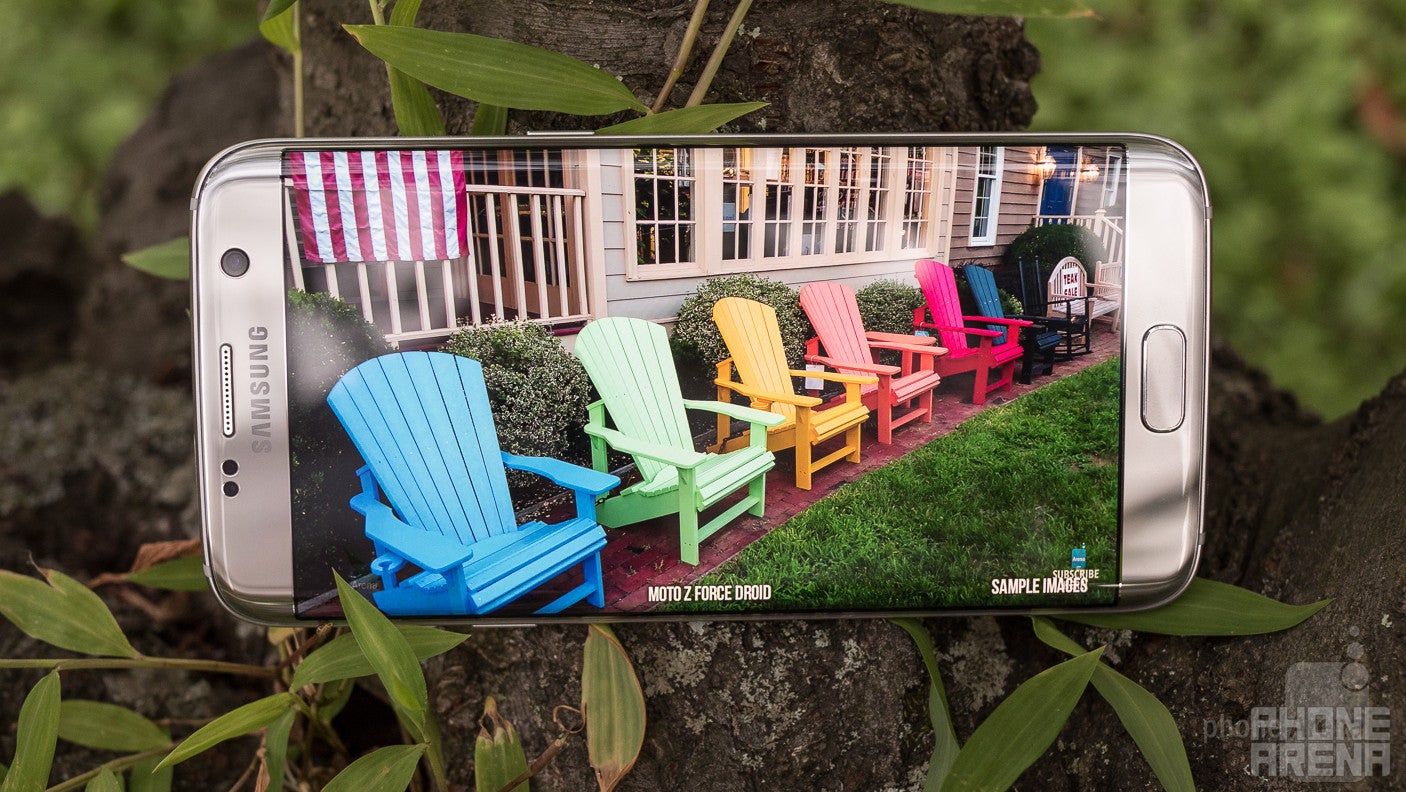
Samsung's gotten very comfortable giving its phones bottom-edge-mounted speakers, and while we understand that's a quite convenient place to install such components, the Moto's front-facing speaker orientation is tremendously more satisfying for media playback. While output is comfortably loud from both phones, we found the audio produced by the Galaxy S7 edge to be a bit hollow-sounding; though to be fair, the Moto Z Force Droid's audio could also use a little more depth.
Video playback is smooth and beautiful on both these high-res screens, though the curved edges of the GS7 edge introduce distortion that the Moto avoids.
Samsung's phone comes with its own earbuds, and while Lenovo leaves you to pick up a headset on your own, it does include one critical accessory: the USB Type-C adapter you'll need to use analog headphones at all, thanks to the Moto Z Force Droid arriving without a standard headphone jack.
And of course, the Moto phone has the whole range of Moto Mods accessories it can tap into to enhance its multimedia experience, from beefier speakers to a pico projector.
Call Quality
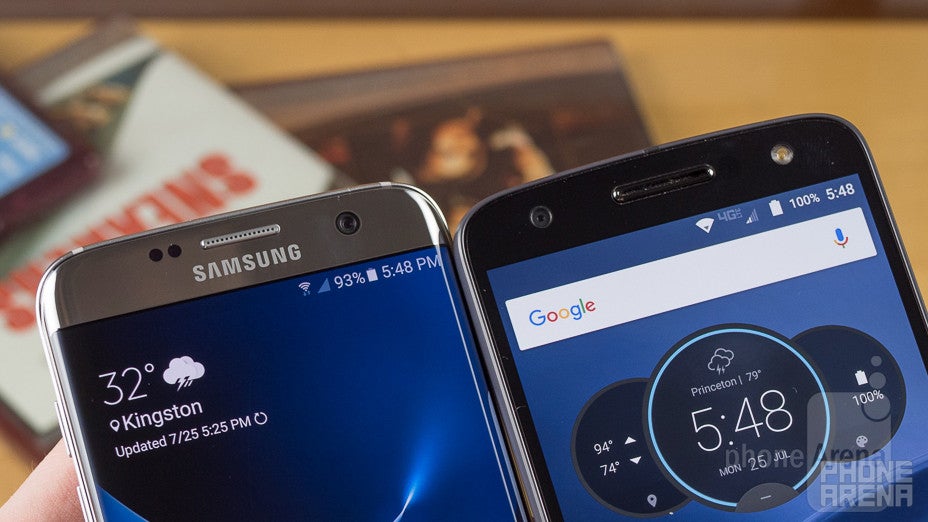
A lot of us take voice calls for granted, but there's still a lot of variance in just how much thought has gone in to make sure a new smartphone sounds as good as it can when tapping into the old voice-call network.
Both handsets delivered acceptable call quality, though let us down at different ends of the spectrum. The Moto Z Force Droid's audio was crisp and clear, though mild static-like interference was peppered throughout. With Samsung's phone, meanwhile, the background noise level was lower, but the audio itself sounded much more muddled, lacking high-frequency fidelity.
Battery
When you've both got huge batteries, recharging tech becomes critical
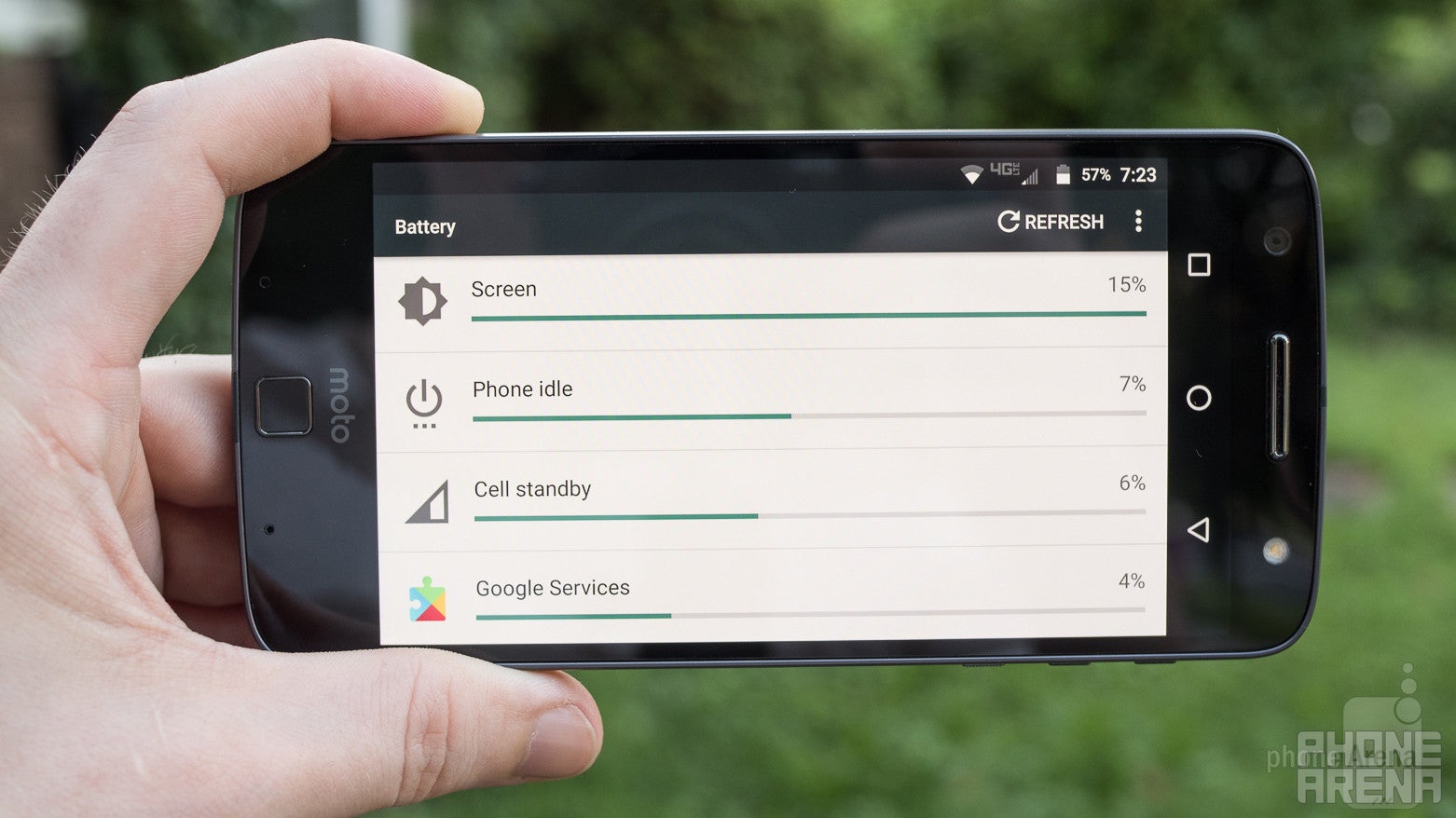
Samsung's and Lenovo's phones attempt to do pretty similar things with their batteries. Each model offers a larger battery than its standard-edition flagship cousin: 3,600mAh for the Galaxy S7 edge, while the Moto Z Force Droid gets a 3,500mAh component. And indeed, battery life for the two phones was an even race in our custom testing, with each phone lasting slightly over seven hours.
Thanks to their support for quick-charging tech, the two phones were also both fast to recharge, going from 0 to 100% in under two hours – though the GS7 edge did have a slight lead here.
Maybe the biggest difference pops up when we look at wireless charging: Samsung's phone is all ready to be dropped on a charging mat and powered wirelessly, while the Moto offers no such option. Of course, you could add such support with an appropriate Moto Mod, but Samsung's got the advantage in out-of-the-box support.
Conclusion

Samsung's GS7e is the phone for you if you place a premium on camera performance, smooth, stylish looks, broad mobile payment compatibility, and support for wireless charging.
The Moto Z Force Droid is a much more utilitarian handset, but its easier-to-view flat display and front-facing speaker make it the superior option for media playback, and while it's too early to say whether or not Moto Mods accessories will really take off, there's the potential there to add a lot of new features to the handset through hardware add-ons.
So, which is it? Do you go for Samsung's predictable, but still very attractive and well-executed handset? Or do you decide that now's the time to invest in a modular smartphone and buy into Lenovo's grand experiment? Samsung's the easy answer, but there's a whole lot to like from the Moto for users looking for something a little different.
Moto Z Force Droid
Pros
- Moto Mods accessories are a huge source of potential
- Front-firing speaker is well-designed for media playback
- Flat screen won't distort games or videos (and can survive a hard drop)
- Extra-speedy, accurate fingerprint scanner
Samsung Galaxy S7 edge
Pros
- Killer camera that still puts higher-res sensors to shame
- Eye-catching design that looks and feels all sorts of premium
- Long-lasting battery with both wireless and fast-charging support
- Useful additions to standard Android interface


























Things that are NOT allowed: